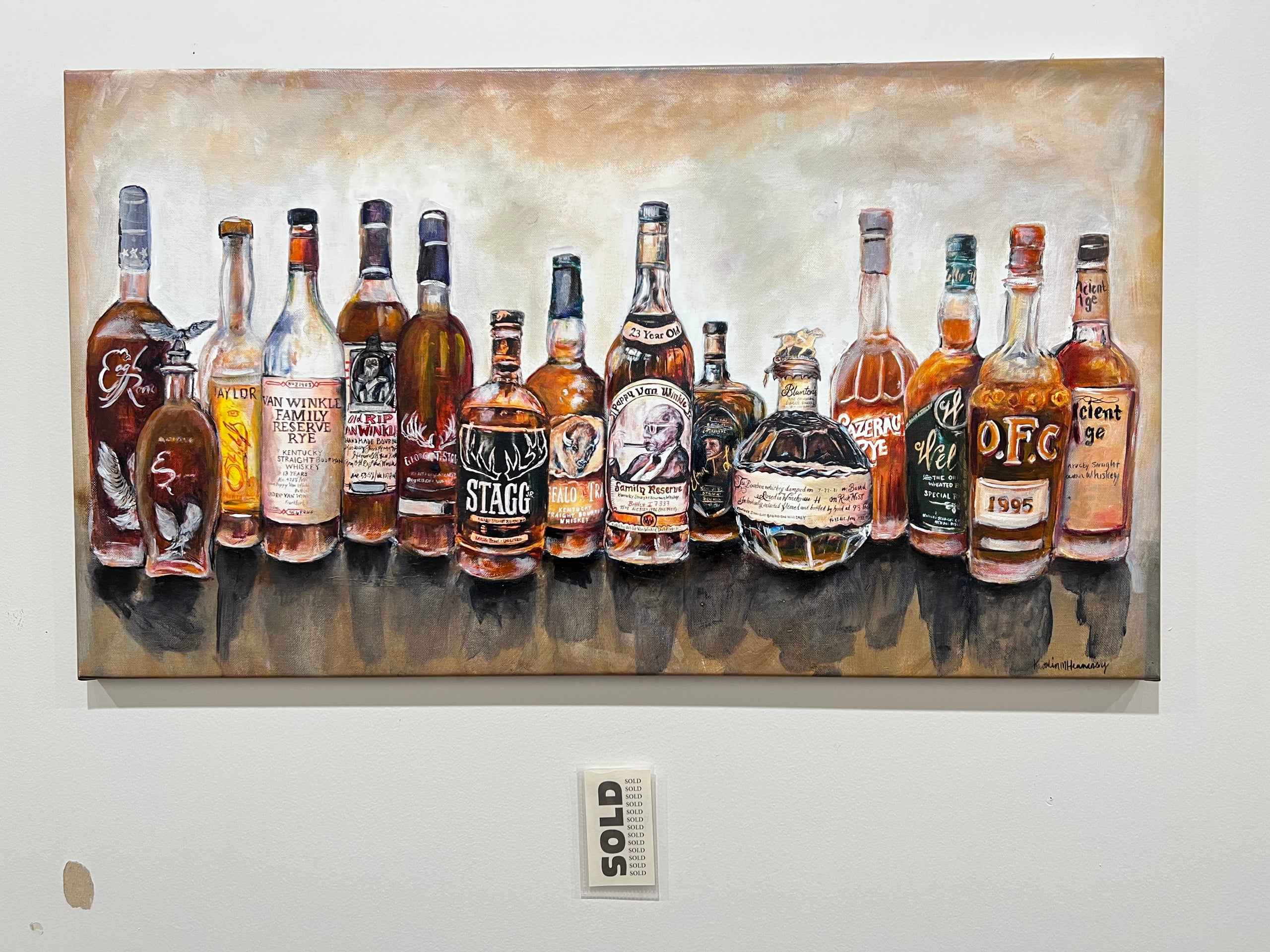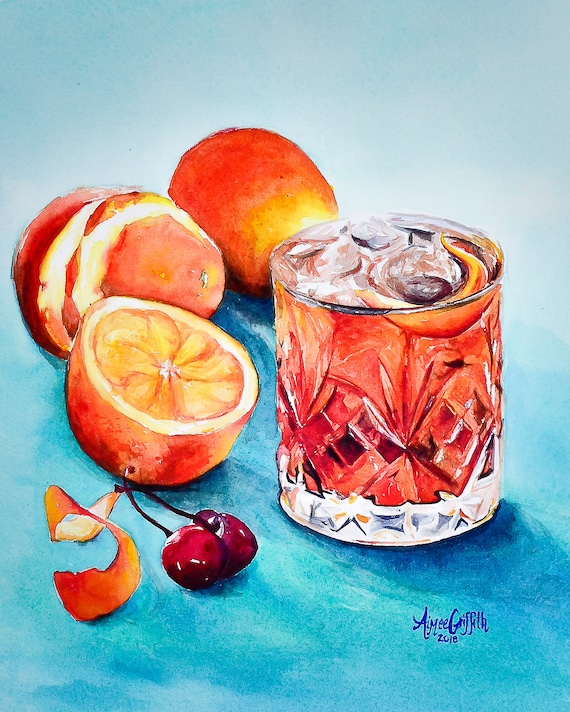Introducing the Charm of Bourbon Art: A Homage to Craft Distillers
Wiki Article
Recording the Essence of Scotch Art Via Special Visual Representations and Designs
The art of scotch prolongs beyond the fluid itself, manifesting via a selection of visual representations that encapsulate its fabled heritage and workmanship. What stays to be revealed is just how these progressing designs show not just the whiskey itself however also the transforming landscape of creative analysis. Bourbon Art.The Background of Bourbon Art

As bourbon manufacturing spread, so too did the wish to boost its experience through art. From the intricate engravings on early barrels to the elaborate tags of contemporary containers, each element mirrors a special artistic vision, acting as an aesthetic narrative of the whiskey's heritage.
In the 19th and 18th centuries, the rise of the industrial change additionally improved bourbon art, causing cutting-edge packaging and advertising that captured customer focus. Artists and developers began explore looks, imbuing whiskey-related images with symbolic definitions that conveyed concepts of area, practice, and workmanship.
Today, scotch art continues to develop, mixing typical approaches with modern art kinds. Whiskey Art. This continuous discussion in between the spirit and its graph emphasizes the enduring bond between bourbon and society, enhancing the total experience for enthusiasts worldwide
Iconic Container Styles
While several factors add to the allure of whiskey, legendary container designs play a pivotal role fit customer understanding and boosting the overall experience. The visual discussion of bourbon bottles is not merely an aesthetic consideration; it functions as a bridge between the consumer and the product, stimulating feelings and setting expectations.Distinctive shapes, materials, and closures can elevate a whiskey brand name's identification, making it promptly recognizable on jampacked shelves. The timeless Glenfiddich container, with its classy tapered silhouette, conveys a sense of tradition and workmanship, while the strong, modern-day layout of the Balvenie container mirrors advancement and elegance. In addition, using tinted glass or unique structures can suggest the quality and character of the scotch within.
Famous styles often include components of social heritage, representing the brand's background and link to its origins. Brand Names like Jack Daniel's utilize a straightforward, robust design that resonates with its American whiskey heritage. Inevitably, the impact of container layout prolongs past simple functionality; it encapsulates the significance of the brand name, inviting customers to check out and delight in the rich tapestry of bourbon society.
Tag Artwork and Branding
Container styles usually set the stage for what customers can anticipate, yet tag art work and branding play an equally substantial duty in interacting a scotch's identification. The label offers as the initial point of contact between the product and the consumer, enveloping the significance of the bourbon within its visual aspects.Efficient tag art work integrates typography, imagery, and shade to produce a narrative that reverberates with the brand's heritage and target market. For example, a label featuring vintage typefaces and elaborate pictures might stimulate a feeling of practice and workmanship, interesting aficionados. On the other hand, strong shades and contemporary design elements could attract a younger group seeking advancement and enjoyment.


Photography and Visual Storytelling
Catching the essence of bourbon via photography and aesthetic narration is an art form that raises the brand name experience. This tool goes beyond plain item representation, delving into the intricate narratives that surround each container. By utilizing compelling imagery, photographers can stimulate feelings that resonate with customers, eventually forging a much deeper connection to the whiskey brand.Visual storytelling in whiskey digital photography often uses abundant textures, lighting, and make-up to highlight the special features of the spirit. The interplay of light and darkness can accentuate the brownish-yellow tones of bourbon, while the selection of background aspects-- such as rustic barrels or elegant glassware-- can enhance the brand's heritage or way of living associations.
Additionally, recording the ceremonial aspects of scotch consumption, from the pouring to the sampling, invites customers into a sensory experience, permitting them to envision the tastes and aromas that wait for. Each photo not just showcases the item yet also informs a tale of workmanship, tradition, and the minutes that bourbon can enhance - Limited Edition. Hence, photography becomes an effective device in verbalizing the identification of scotch brand names, positioning them within the wider cultural landscape
Emerging Patterns in Scotch Art
The advancement of bourbon art is progressively shaped by contemporary trends that mirror broader societal shifts and customer choices. One famous fad is the combination of sustainability into art techniques. Musicians are now using recycled materials and green processes to produce whiskey-themed pieces, resonating with environmentally aware customers. This shift not just highlights the importance of sustainability yet additionally boosts the story surrounding whiskey manufacturing.In addition, digital art has actually surged in appeal, allowing for cutting-edge depictions of bourbon. Artists are leveraging technology to craft immersive experiences, such as augmented fact installments that involve audiences and offer a much deeper understanding of scotch's social relevance. This trend additionally extends to social networks platforms, where aesthetically striking material amasses interest and fosters community amongst lovers.
Additionally, partnerships between bourbon brands and musicians are becoming much more prevalent. These collaborations produce limited-edition packaging styles and special artworks that commemorate both the craftsmanship of scotch and the creativity of musicians. As bourbon art proceeds to advance, these arising patterns will most certainly shape its future, fostering a dynamic intersection of society, sustainability, and innovation within the scotch community.
Conclusion
To conclude, the art of bourbon encompasses a varied array of graphes that show its rich heritage and workmanship. From iconic container designs and elaborate tag artwork to compelling photography, each aspect adds to a more comprehensive narrative that improves the customer's experience. As arising patterns, such as electronic art and sustainability, proceed to form this artistic landscape, the diverse identity of bourbon stays a sustaining source of cultural connection and exploration.

In final thought, the art of whiskey includes a varied variety of aesthetic representations that reflect its abundant heritage and workmanship.
Report this wiki page